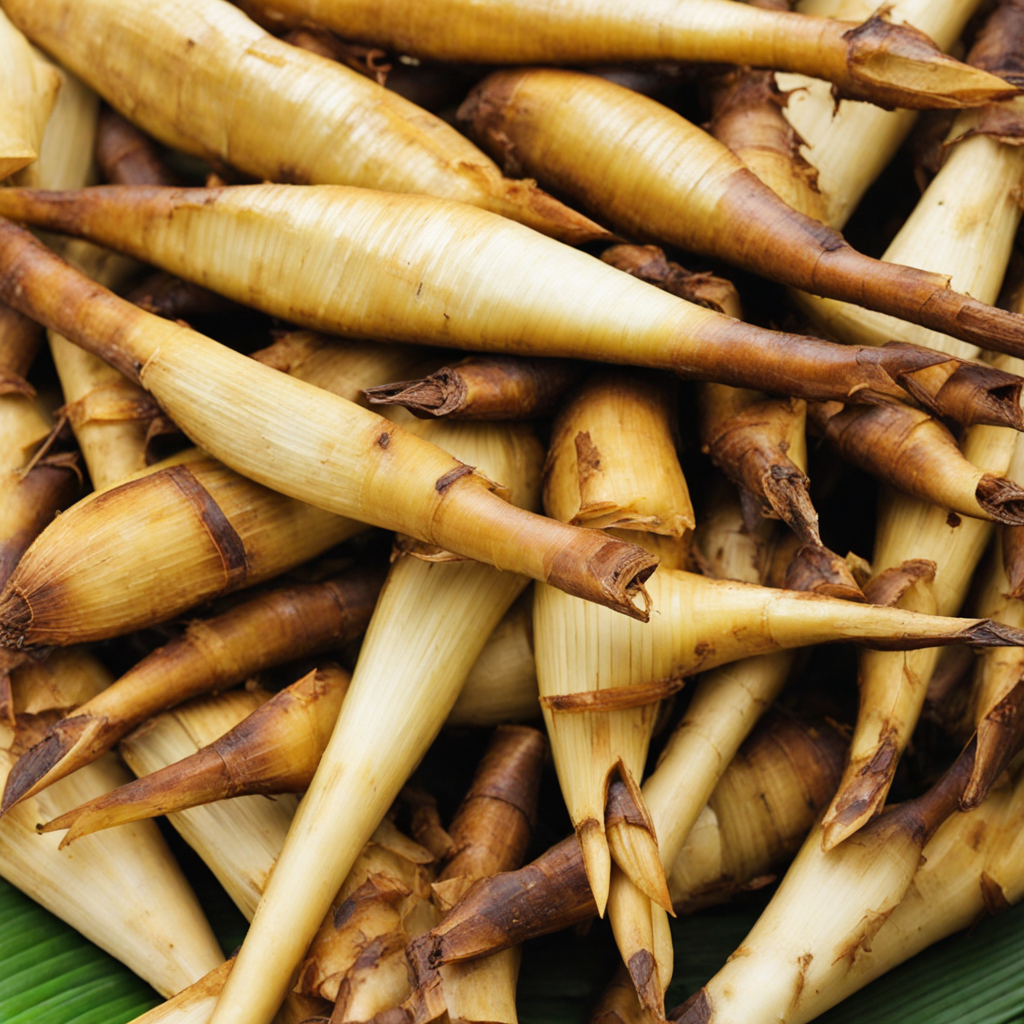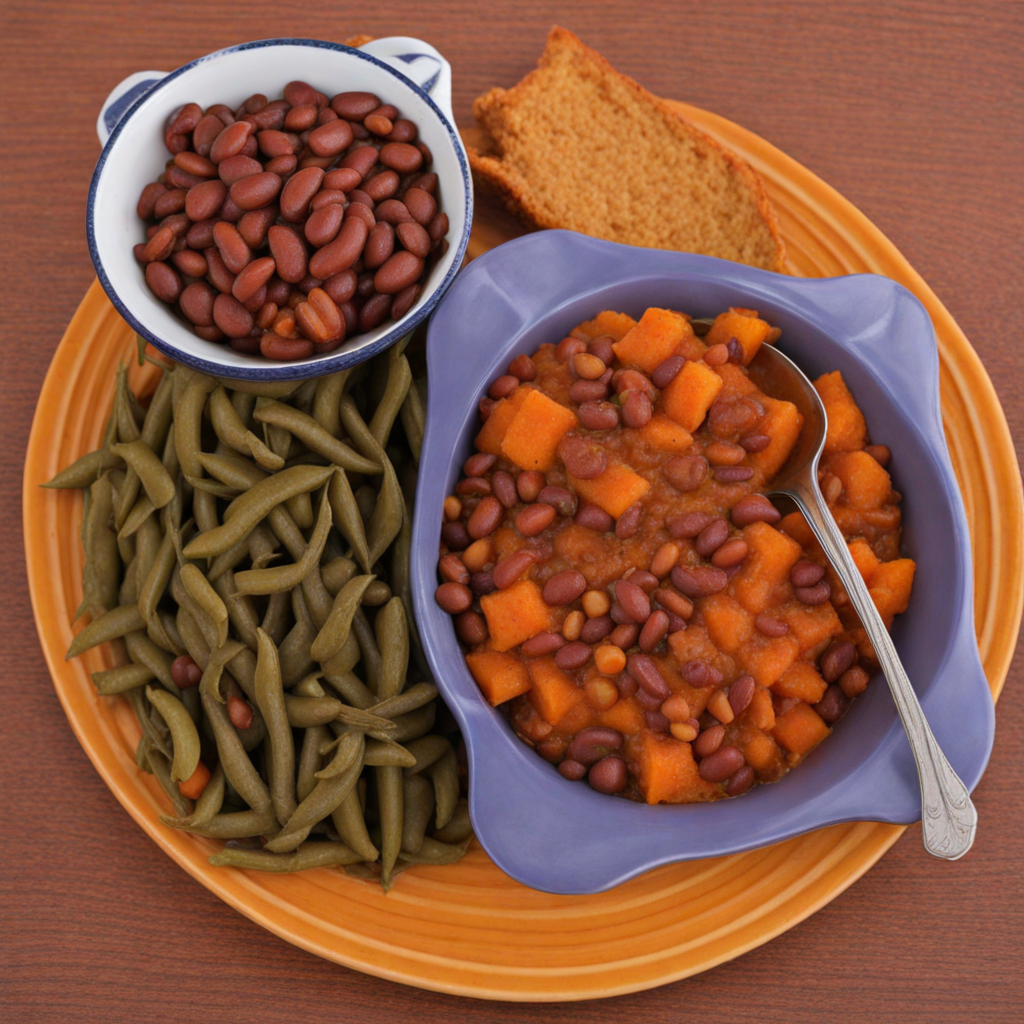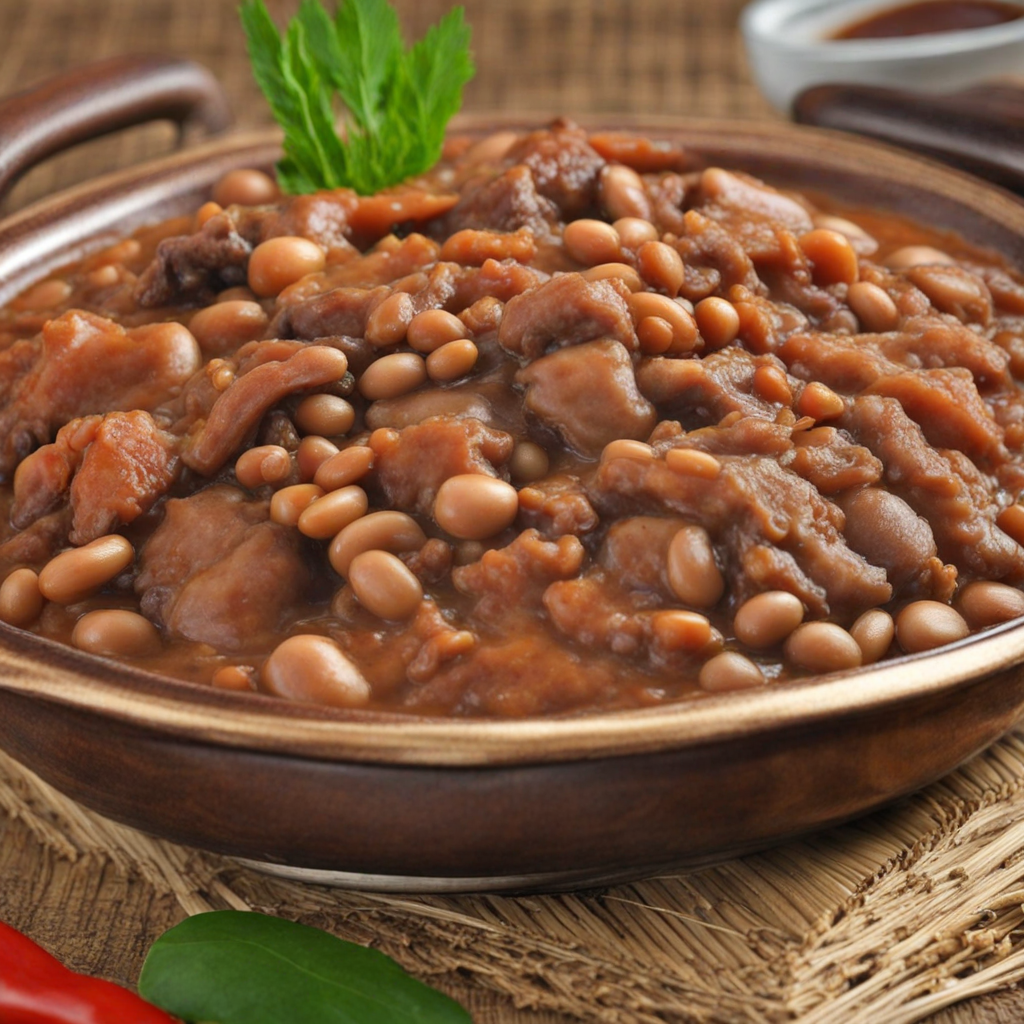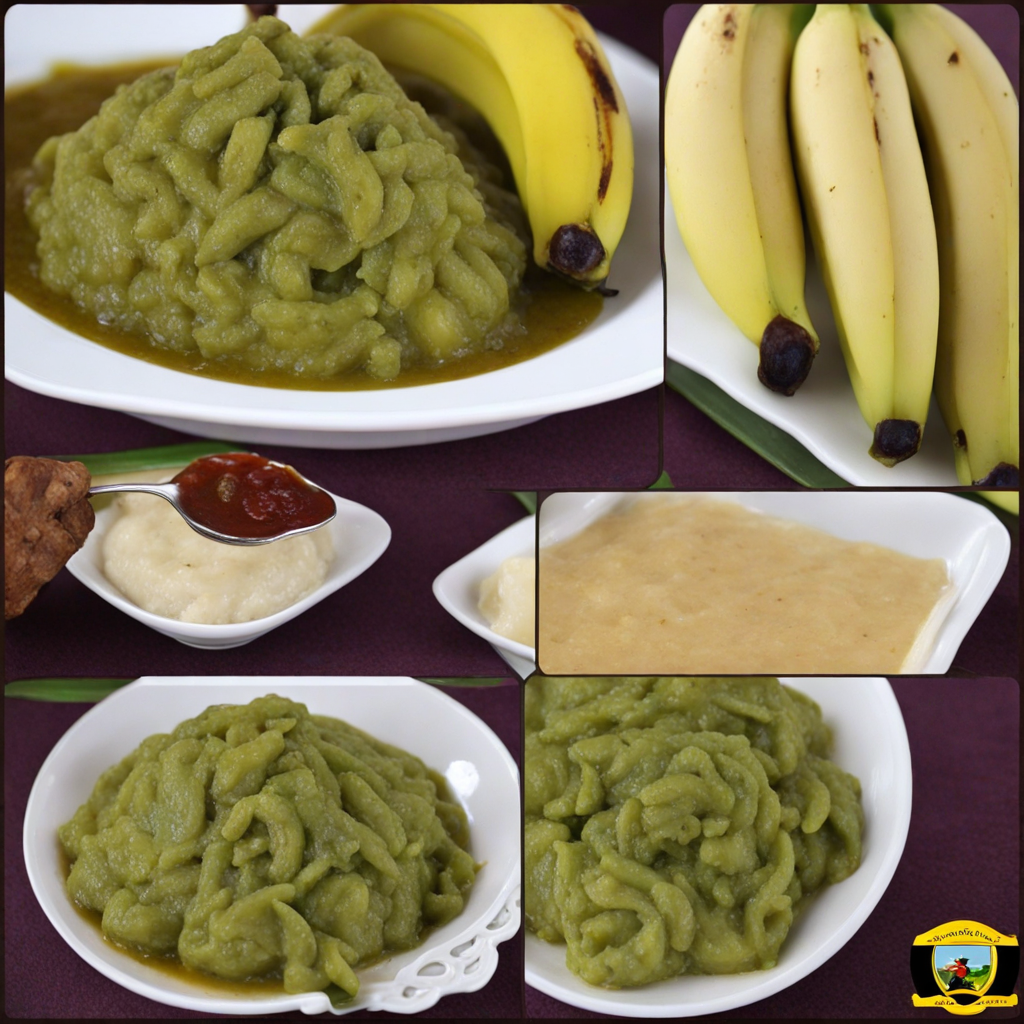Malewa
Malewa is a unique Ugandan delicacy that tantalizes the taste buds with its distinctive flavors and textures. This dish is made from the tender shoots of the bamboo plant, which are carefully harvested and prepared to create a delightful culinary experience. The bamboo shoots are typically boiled or sautéed, allowing their natural sweetness to shine through, while also absorbing the rich flavors of accompanying spices and ingredients. This combination results in a dish that is both refreshing and satisfying, making it a popular choice among locals and adventurous food lovers alike. When you take a bite of Malewa, you may be surprised by its crunchy texture, which contrasts beautifully with the tender, succulent flavor of the bamboo. Often, Malewa is seasoned with a medley of spices, including garlic, ginger, and a hint of chili, adding depth and warmth to the dish. It may be served alongside staples such as posho (maize porridge) or matoke (steamed green bananas), creating a hearty meal that showcases the richness of Ugandan cuisine. Beyond its delicious taste, Malewa holds cultural significance in Uganda, often enjoyed during special occasions and family gatherings. The dish is not only a feast for the palate but also a celebration of the country's natural resources and culinary heritage. As you embark on your journey to discover Malewa, you're not just exploring a new flavor; you're also immersing yourself in the vibrant traditions and community spirit that Ugandans cherish. Embrace the experience and let the delightful essence of Malewa transport you to the heart of Uganda.
How It Became This Dish
The Fascinating History of Malewa: Uganda's Culinary Treasure Malewa, a traditional Ugandan dish, is more than just a meal; it embodies the essence of Ugandan culture, history, and the rich biodiversity of East Africa. This unique dish, made primarily from smoked bamboo shoots, has roots that intertwine with the agricultural practices, social customs, and environmental elements of the region. Origins and Ingredients Malewa is particularly popular among the Bakiga and Batooro ethnic groups in southwestern Uganda, where the vast bamboo forests thrive. Bamboo shoots have been consumed in various cultures around the world, but in Uganda, they have been ingeniously integrated into local culinary practices. The process of preparing malewa involves harvesting young bamboo shoots, which are then peeled, sliced, and smoked over an open flame. This smoking process not only preserves the bamboo but also imparts a distinctive flavor that sets malewa apart from other dishes. The choice of bamboo is significant; it is a fast-growing plant that thrives in Uganda’s fertile volcanic soils, particularly around the slopes of the Rwenzori Mountains and the Kisoro region. The abundance of this resource has allowed the dish to flourish and become an integral part of local diets. Cultural Significance Malewa holds a special place in Ugandan culture. Traditionally, it is prepared for special occasions such as weddings, communal gatherings, and harvest celebrations. The preparation of malewa is often a communal activity, with families and friends coming together to smoke the bamboo shoots, share stories, and strengthen social bonds. This communal aspect underscores the importance of food as a medium for connection and celebration within Ugandan society. The dish is often served alongside traditional staples such as posho (maize porridge), matoke (steamed green bananas), or groundnut sauce, creating a rich and diverse meal that highlights the agricultural bounty of the region. Additionally, malewa is often accompanied by a local brew, further enhancing its role in social gatherings. In the Bakiga culture, malewa is also seen as a symbol of resilience and resourcefulness. The ability to utilize bamboo, a plant that grows abundantly in the region, reflects the ingenuity of the communities that have thrived in this environment. By transforming a simple natural resource into a beloved dish, these communities showcase their deep understanding of sustainable practices. Development Over Time The history of malewa mirrors the broader socio-economic changes in Uganda. During the pre-colonial period, malewa was primarily a food for the local communities, enjoyed in family settings and during special events. However, with the advent of colonialism and the introduction of cash crops, agricultural practices began to shift. Many communities turned towards growing crops that were more commercially viable, which led to a decline in some traditional practices, including the preparation of malewa. Post-independence Uganda saw a revival of interest in indigenous foods as part of a broader movement to reclaim cultural identities and traditions. The 1980s and 1990s were critical decades for this resurgence, as Ugandans began to appreciate the nutritional and cultural value of traditional dishes. Malewa emerged as a symbol of this culinary renaissance, with chefs and home cooks alike reintroducing it into the culinary landscape. The 21st century has brought about further changes in how malewa is perceived and consumed. Globalization and urbanization have introduced new culinary influences, but they have also sparked a renewed interest in traditional foods. With the rise of the farm-to-table movement and a growing emphasis on local sourcing, malewa has gained recognition beyond its regional roots. It is now featured in some upscale restaurants in Uganda and even internationally, where chefs seek to highlight authentic Ugandan flavors. Moreover, the increasing awareness of the nutritional benefits of bamboo shoots has contributed to the dish's popularity. Rich in vitamins, minerals, and dietary fiber, malewa is celebrated not only for its unique taste but also for its health benefits. This has made the dish appealing to a broader audience, including health-conscious individuals and food enthusiasts seeking to explore authentic Ugandan cuisine. Modern Interpretations and Global Reach In contemporary Uganda, malewa has evolved to incorporate various cooking styles and presentations. While traditional methods remain popular, some modern chefs have experimented with malewa, creating innovative fusion dishes that blend local ingredients with international culinary techniques. For example, malewa may be used in salads, served as a topping for pizzas, or incorporated into gourmet appetizers. Such adaptations highlight the versatility of this traditional ingredient and its capacity to appeal to diverse palates. Additionally, social media has played a significant role in promoting malewa and other Ugandan dishes. With the rise of food blogging and digital storytelling, many Ugandan chefs and home cooks have taken to platforms like Instagram and YouTube to share their recipes and cooking techniques. This has not only popularized malewa among younger generations but also introduced it to a global audience eager to explore the flavors of Uganda. Conclusion Malewa is not just a dish; it is a testament to the rich culinary heritage of Uganda. Its journey from a simple traditional meal to a celebrated culinary icon encapsulates the resilience and creativity of the Ugandan people. As it continues to adapt and evolve, malewa serves as a reminder of the importance of preserving cultural identity through food. Whether enjoyed in a rural homestead or a chic urban restaurant, malewa remains a symbol of community, celebration, and the enduring spirit of Ugandan culture. In a world increasingly dominated by fast food and globalized cuisine, the story of malewa is a powerful narrative of connection to land, culture, and history, inviting us all to appreciate the flavorful tapestry of Uganda's culinary landscape. As we savor this unique dish, we also partake in the rich legacy it represents, celebrating the vibrant culture and traditions of the Ugandan people.
You may like
Discover local flavors from Uganda







